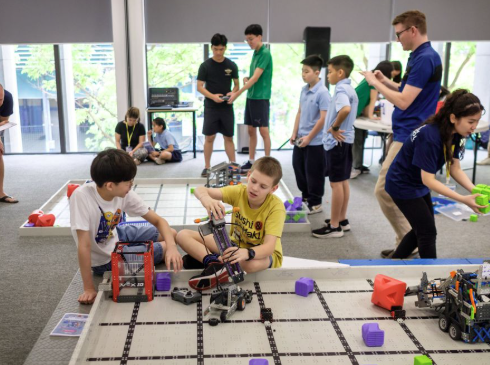In the world of education, the concept of interdisciplinary learning is gaining more attention, especially in high school academies. But what exactly is interdisciplinary learning, and why is it such a powerful tool for students?
Interdisciplinary learning refers to combining multiple subjects or areas of study to help students see the connections between disciplines and solve complex real-world problems. In high school academies, this approach is revolutionizing the way students engage with their education, preparing them for the challenges of the modern world.
What Is Interdisciplinary Learning?
Interdisciplinary learning blends knowledge from various subject areas, encouraging students to explore how different disciplines relate to each other. For example, in a high school academy, students might learn about environmental science not just through biology or chemistry, but also through social studies and economics to understand the broader implications of environmental issues.
Instead of treating subjects like math, science, history, and English as separate entities, interdisciplinary learning emphasizes their interconnectedness. Students are encouraged to think critically and creatively, drawing from multiple areas of knowledge to find solutions to problems that can’t be fully understood by one subject alone.
Why Is Interdisciplinary Learning Important?
Enhances Problem-Solving Skills: Interdisciplinary learning encourages students to think outside the box. It promotes critical thinking and allows students to approach challenges from multiple perspectives, enhancing their problem-solving abilities.
Fosters Real-World Connections: In the real world, problems and solutions rarely fit neatly into a single subject area. Interdisciplinary learning helps students see how what they learn in the classroom applies to the world around them. Whether it’s tackling global issues like climate change, technological innovations, or social justice, students learn to connect the dots between various fields.
Improves Collaboration: Working on projects that require knowledge from multiple subjects often involves teamwork. Students learn how to collaborate effectively with peers who have different strengths and perspectives, a skill that is invaluable in both higher education and the workforce.
Increases Engagement: When students see how different subjects work together, they are more likely to find learning exciting and relevant. Interdisciplinary learning provides a sense of purpose, as students are able to understand the larger context of what they’re studying, leading to a deeper level of engagement.
Prepares Students for Future Careers: Many of the careers students will pursue in the future require an understanding of multiple disciplines. Whether in healthcare, business, or technology, interdisciplinary skills are essential. High school academies that embrace this approach give students a head start in developing the critical, cross-disciplinary thinking required for success in the workforce.
Examples of Interdisciplinary Learning in High School Academies
STEM Academies: Many high schools offer specialized academies focused on science, technology, engineering, and mathematics (STEM). In these programs, students might work on projects that combine engineering, mathematics, and environmental science to design solutions for real-world problems like renewable energy or sustainable agriculture.
Humanities and Social Science Projects: A high school academy might create projects that combine history, economics, and literature. For example, students could study the impact of the industrial revolution on society by analyzing historical texts, understanding economic theories, and exploring the technological advancements of the time.
Health Academies: Students interested in health-related careers can engage in interdisciplinary learning by combining biology, chemistry, and ethics to explore topics like public health, nutrition, or medical ethics. This broadens their understanding of health beyond just the biological aspect and helps them consider the ethical, social, and policy implications of health issues.
Art and Technology: In schools with a focus on the arts, interdisciplinary projects might combine art, design, and computer science. Students could work on creating digital art, animation, or even game design, learning not only about artistic expression but also the technical skills needed in today’s digital world.
How Can High School Academies Implement Interdisciplinary Learning?
Create Thematic Courses: Academies can develop courses that are designed around central themes or problems that require knowledge from multiple disciplines. For example, a “Sustainable Development” course might include science, economics, and social studies, allowing students to examine global sustainability issues from different angles.
Collaborative Projects: Encourage students to work on collaborative projects that require input from different subject areas. Teachers from different departments can team up to guide students through the project, ensuring that the connections between subjects are clear.
Use Real-World Issues: High school academies can connect classroom learning to real-world issues by incorporating current events, social issues, and global challenges into the curriculum. This approach helps students understand the relevance of their education and how interdisciplinary knowledge can be used to address global problems.
Conclusion
Interdisciplinary learning in high school academies is about more than just memorizing facts—it’s about connecting knowledge across subjects to solve real-world problems and prepare students for the complexities of the future. By embracing this approach, high school academies can equip students with the critical thinking, collaboration, and problem-solving skills needed for success in both higher education and their future careers. Whether students are interested in science, the arts, or social sciences, interdisciplinary learning offers them a well-rounded, practical, and exciting way to approach their education.














